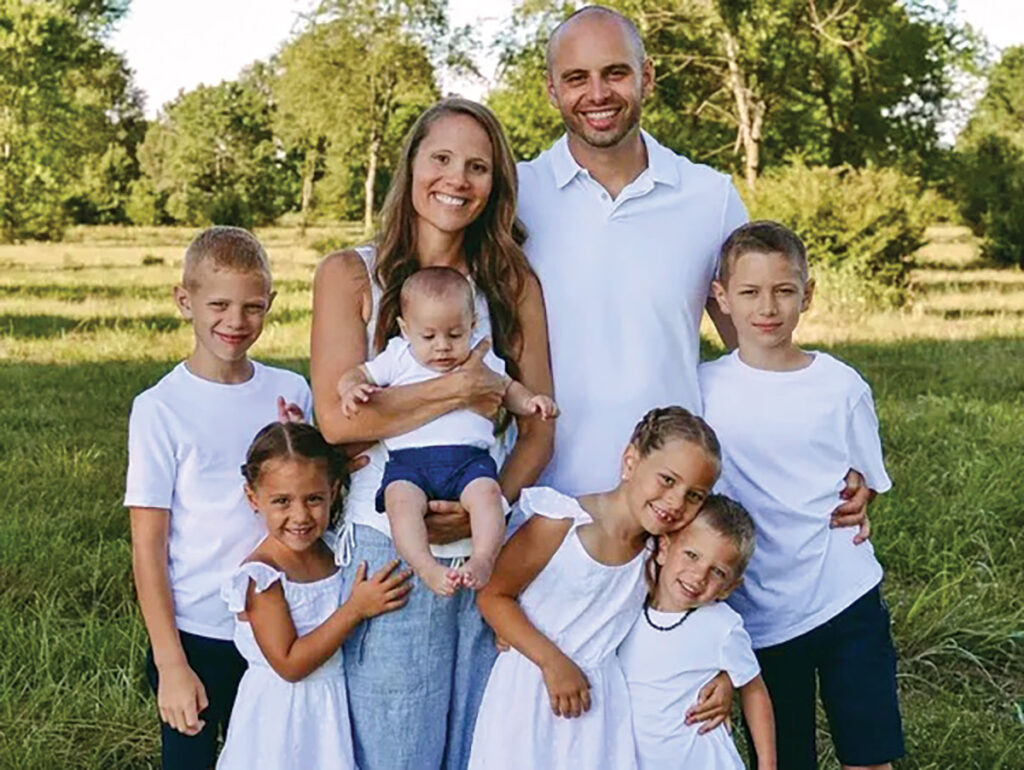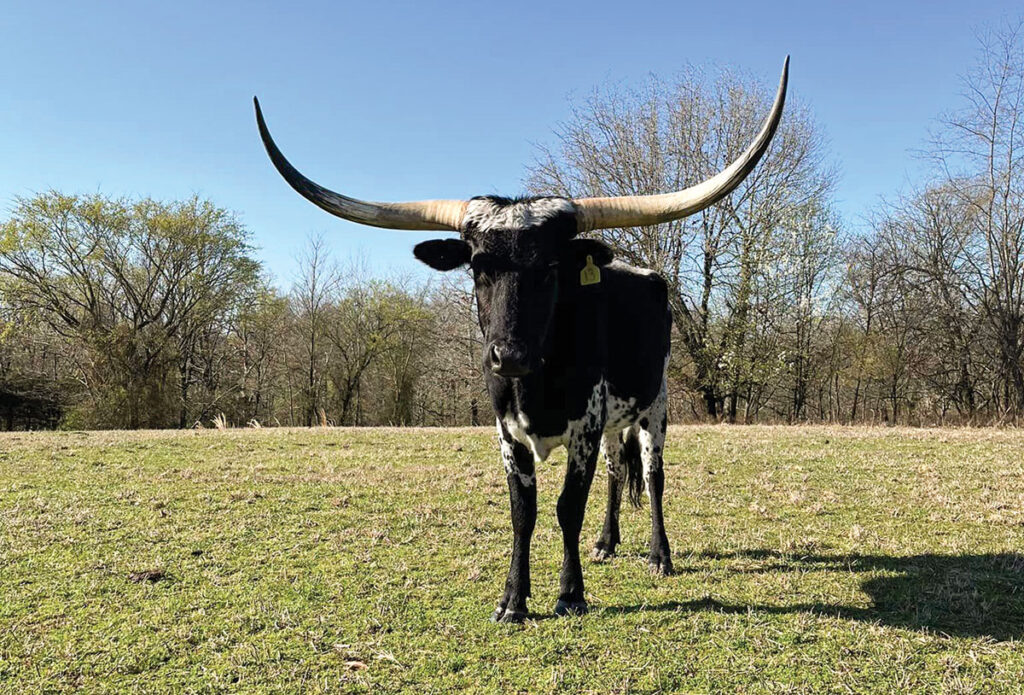
Neville Gough fulfills his dreams of being a farmer
TONTITOWN, ARK. – “If you are not living on the edge, you are taking up too much room,” is a quote Neville Gough often heard from his father while growing up in Northwest Indiana and it is how he lives his life today.
Neville is a first-generation farmer. He did not grow up farming, and his family has had no history of farming for several generations. Neville came from a construction family. His grandfather was a bricklayer, and his father was a bricklayer and a developer. Neville naturally followed in their footsteps and became a construction manager.
However, his love for farming started on those Indiana back roads when he would ride his bike. While riding, the avid endurance cyclist would pass miles of farms that grew corn, soybean, hogs and cattle. Being outside was what he really enjoyed, and he found being in the country was his place of peace and rest.
Neville and his wife Elizabeth have six children, and he dreamed of farming for his family. Last year, he decided it was time to make the dream a reality. He has a lot of dreams and goals, and he is the type of person who goes after those goals once he has set them. “It may take me a while to get there, but I will obviously get there one day.”
When he finally decided farming was what he wanted to do, he suddenly proclaimed, “I’m going to do this thing.” And he did.
“Everything, by God’s grace and His providence, just fell into place after much prayer,” Neville said. “Then, all of a sudden, one thing happened after another, and I was blessed to lease 50 acres; then, since I had the land, I purchased my first cows. It all just fell into place.”
After researching all the possibilities, he decided the approach he wanted to take would focus on the regenerative farming principle; minimize or eliminate tillage, protect the soil, add biodiversity and integrate livestock. The benefits of this approach are a marked increase in overall soil health and an increase in soil organic matter.
“We are not cattle farmers; we are grass farmers first,” Neville said. “I’ve been focusing on the soil health, kicking the dirt, digging with a shovel, and trying to figure out what I need to do to bring life back to it and trying to be a wise steward of the land with the limited material and budget that I have.”
Neville recently purchased 10 Texas Longhorns from 4B Longhorns in Oklahoma, eight heavily-bred cows and two heifers. He also purchased two bull calves, hoping to keep one as a herd bull.
“Because this is my first time ever farming and they (from my research) tend to be more forgiving to a first-timer mistakes,” Neville said of his Longhorns.

Other reasons for choosing Longhorns are the ease of calving, parasite resistance, foraging reputation, a gentler temperament than some breeds, and naturally-leaner meat that is lower in cholesterol than chicken. He believes there could be a niche market in Northwest Arkansas for a naturally-lean beef product, with it being a very athletic, health-conscious community.
Neville has done a lot of research into regenerative farming and follows several prominent farms practicing it efficiently. Wolki Farms out of Australia is one of his favorites.
“I just love their regenerative systems approach and their farm tour experience ideas, how they are bringing people, who didn’t grow up on a farm, or had that farm experience, to their farm to teach them about farm life,” he said.
His long-term goal is to model his business in a similar fashion and provide a farm stay experience with direct-to-consumer sales and potentially a custom butcher shop.
Neville’s current goal is to complete his movable paddock system to mob graze the herd. Mob grazing differs from traditional rotational grazing due to it being a shorter duration but high-density grazing event with a longer grass recovery period. Paddocks are typically grazed from one to two days with a 30-to-60-day recovery period. Each paddock will be from 1 to 2 acres each and have poly-wire strand sets. Neville plans to use GPS to grid out the paddocks. He has a mobile chicken coop, 16 chickens and some eggs in an incubator waiting to hatch. His goal is to have 40 to 50 chickens grazing with the cattle to scatter manure and eat any parasites that may be present.
He is working on a mobile watering system that will allow him to get water from one paddock to the next more efficiently. Since he has an incline on one of his pastures is a considerable distance away from his only water source, he may have to build a pond in order to gravity flow the water to the paddocks instead of trying to push it up the hill.
“It is a learning experience and I still have a lot of learning to go,” he said.
Neville is quick to give credit to his friends from church and work who are farmers.
Neville is passionate about creating good soil health and making the land more sustainable.
“I really want to leave this dirt that I am a steward of in better condition than when I received it,” he said. “I know what I do will only make a minor impact on the environment, but I want to do my part. Growing up as a developer’s son and now being in the construction industry myself all I have done is take out ecosystems. Now, I finally get the chance to help an ecosystem and develop something that will live long beyond the buildings and the parking lots.”






